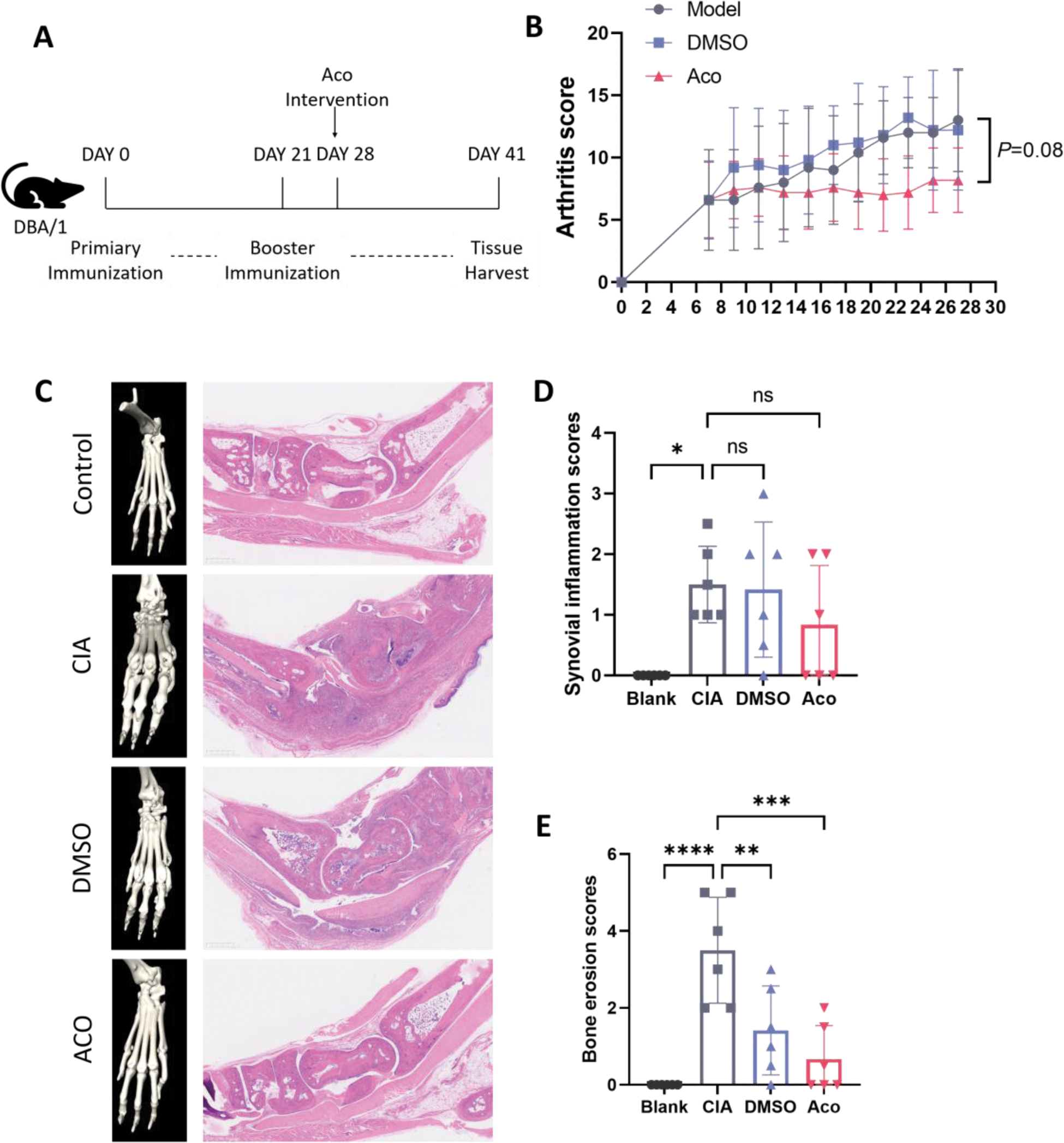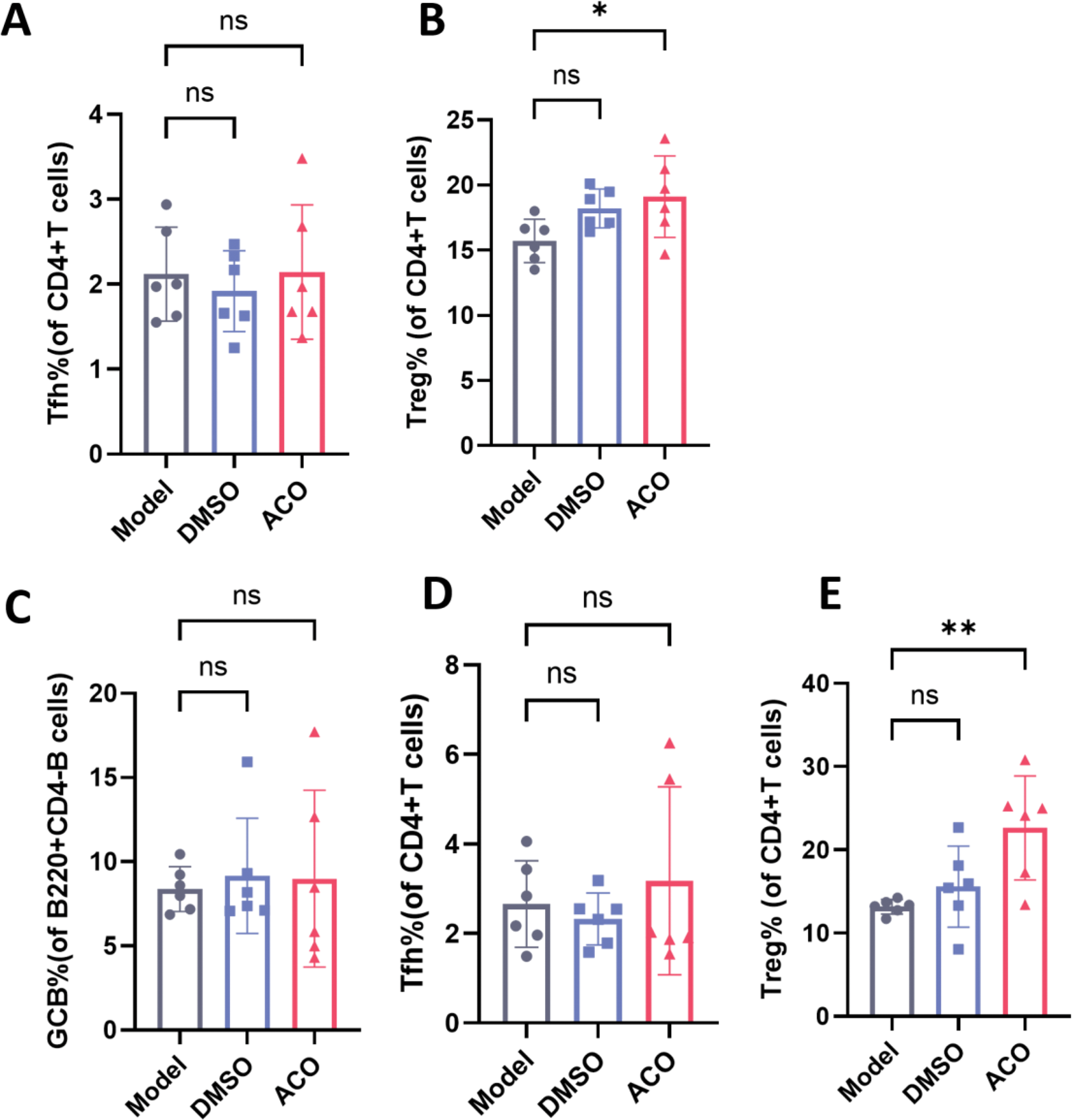

Background: Rheumatoid arthritis (RA) is an aggressive autoimmune disease that attacks synovial joints and gradually involves multiple systems. Traditional Chinese Medicine (TCM) is an important source of complementary and alternative medicine with a long history. The efficacy and safety of TCM for RA treatment have been convincing. Therefore, TCM is a promising development for the treatment of RA in the future. Aconiti Lateralis Radix Praeparata (Fuzi) has been proven to be a remarkable herbal medicine in the treatment of RA. Several pieces of evidence have proven that Aconitine (Aco) is the main active ingredient of Fuzi and has immune-regulating effects. However, the mechanism of its action in the treatment of RA remains unknown.
Objectives: This study aims to explore the mechanism of Aco as a potential treatment of RA.
Methods: The collagen-induced arthritis (CIA) mice model was constructed with male DBA/1 mice. The established CIA mice received 0.018% DMSO (9 µg/kg/d, po) and aconitine (dissolved in 0.018% DMSO, 30 µg/kg/d, po) for a duration of 4 weeks (n = 6) (Figure 1A). The arthritis score was estimated every 2 days. The posterior ankles were collected for hematoxylin and eosin (HE) staining and micro CT, which indicate the synovial inflammation and bone erosion, respectively. The spleen and the joint draining lymph nodes (DLNs) were harvested for flow cytometric analysis to examine the alterations in germinal center B cells (GCBs), follicular helper T cells (Tfh), and regulatory T cells (Tregs) following Aco therapy.
Results: Aco treatment demonstrates a tendency to decrease the arthritis score in CIA mice when compared to the control and DMSO groups (P = 0.089, Figure 1B). HE staining indicated that Aco tends to reduce the degree of synovial inflammation (P = 0.367, Figure 1C and D). And bone erosion was significantly improved by Aco (P < 0.001, Figure 1C and E). Flow cytometry analysis of T cells revealed that Aco treatment markedly elevated the proportion of CD4+ CD25+ Foxp3+ Tregs in both spleen and joint DLNs (P = 0.017, Figure 2E) and spleen (P = 0.004, Figure 2B).
Conclusion: Aco can suppress the RA disease progression by multiple targeting of the immune cells and bone protection.
REFERENCES: NIL.
Aconitine (Aco) reduces joint inflammation and bone destruction in mice. (A) Scheme of the experimental design for a Aco based curative regimen using the classic CIA mouse model of RA. (B) Arthritis scores in CIA mice with or without Aco. CIA, n = 6; DMSO, n = 6; Aco, n = 6. (C) Arthritis and bone erosion of the posterior ankles by images of micro-CT (left) and hematoxylin and eosin (H&E)–stained (right) analysis (Zoom in 50 times. n = 6 per group.). (D) Histopathological scoring of the posterior ankles. n = 6. (E) Bone erosion scores of the posterior ankles. n = 6. Data are here expressed as means ± SEM. Significance was determined using two-way ANOVA, followed by Fisher’s LSD multiple comparisons test (B), or ordinary One-way ANOVA (D and E). *P < 0.05, **P < 0.01, ***P<0.001 and ****P<0.001.

Aconitine suppresses immune responses in mice. Graphs show the frequency of CD4+ CXCR5+ PD1+ Bcl6+ TFH cells (A) and CD4+ CD25+ Foxp3+ Tregs (B) in spleen; B220+ CD4− CD95+ GL-7+ germinal center B cells (C), CD4+ CXCR5+ PD1+ Bcl6+ TFH cells (D), and CD4+ CD25+ Foxp3+ Tregs (E) in joint draining lymph nodes; CIA, n = 6; DMSO, n = 6; ACO, n = 6. Datas are here expressed as means ± SEM. Significance was determined using ordinary One-way ANOVA (A and C), and Kruskal-Wallis test (B, D and E). *P < 0.05, and **P < 0.01.

Acknowledgements: Thanks to all the participating researchers and experimental animals.
Disclosure of Interests: None declared.
© The Authors 2025. This abstract is an open access article published in Annals of Rheumatic Diseases under the CC BY-NC-ND license (